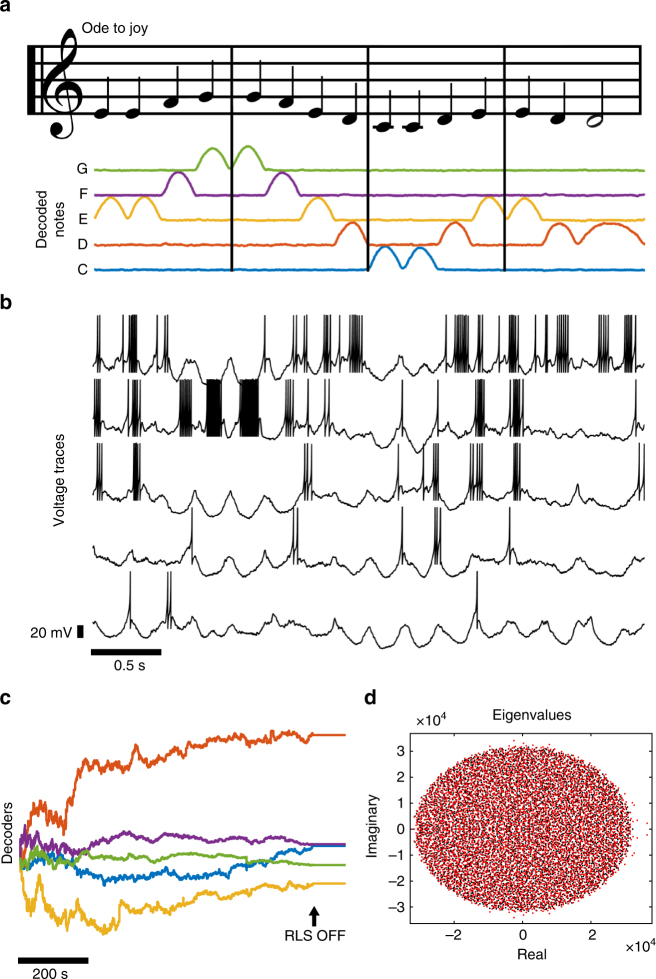Fig. 3.
Using spiking neural networks for pattern storage and replay with FORCE training. a The notes in the song Ode to Joy by Beethoven are converted into a continuous 5-component teaching signal. The sheet music has been modified from Mutopia (76) by Wilten Nicola. The presence of a note is designated by an upward pulse in the signal. Quarter notes are the positive portion of a 2 Hz sine wave form while half notes are represented with the positive part of a 1 Hz sine wave. Each component in the teaching signal corresponds to the musical notes c–g. The teaching signal is presented to a network of 5000 Izhikevich neurons continuously from start to finish until the network learns to reproduce the sequence through FORCE training. The network output in a is after 900 s of FORCE training, or 225 applications of the target signal. For 1000 s of simulation time after training, the song was played correctly 205 times comprising 820 s of the signal (Supplementary Figs. 15, 16). b Five randomly selected neurons in the network and their resulting dynamics after FORCE training. The voltage traces are taken at the same time as the approximant in a. c The decoders before (1 < t < 900) and after (t > 900) FORCE training. d The resulting eigenvalues for the weight matrix before (black) and after (red) learning. Note that the onset to chaos occurs at G ≈ 103 for the Izhikevich network with the parameters we have considered

